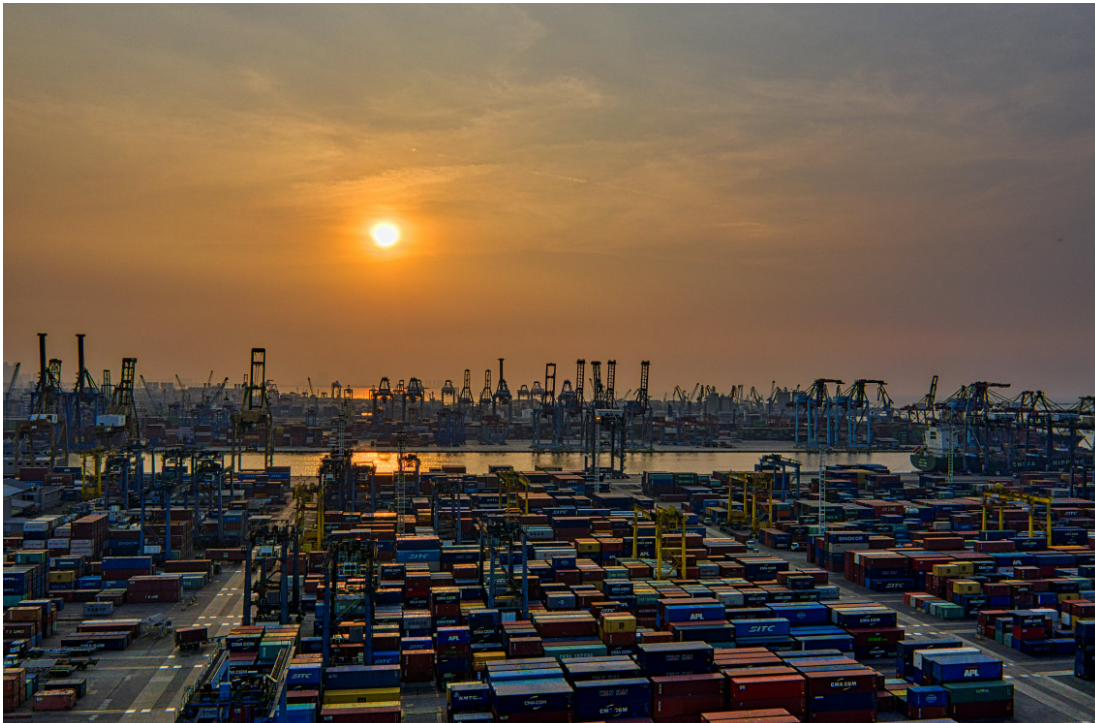The COVID -19 pandemic has caused worldwide online sales to skyrocket at an unprecedented pace as people are forced to shop online due to periodic or sustained lockdowns and social distancing measures.
While Amazon’s revenues have benefited greatly from this surge in E-commerce, container shipping costs for sellers are actually growing faster than online sales, devouring profit margins in huge bites.
This dramatic rise in shipping costs and consumer sales, coupled with pandemic-related trade restrictions, has disrupted supply chains globally and created a worldwide shortage of shipping containers.
The pandemic has also delayed container turnaround times and congested ports. Sellers are at risk of running out of stock and not being able to replace it without significant delays, regardless of their supplier’s geographic location worldwide.
Sellers must now contend with astronomical increases in ocean freight rates from China to the US and Europe.
To profit from the growing demand for placement on cargo vessels, a number of private Chinese firms are accumulating containers and selling them to the highest bidder. The move is exacerbating the problem for suppliers, as they resort to bidding against each other to gain access to the vessels.
Container Shipping Costs
Some areas are reporting that the composite cost of shipping a 40-foot container on eight major East-West routes has risen 360% from a year ago. The largest price jump was along the route from Shanghai to Rotterdam in the Netherlands, with the cost of a 40-foot container soaring 659%. Container shipping prices on routes from Shanghai to Los Angeles have nearly doubled since June 2020, and routes to New York have also jumped significantly.
It has become the ‘norm’ to see rates now range between $20,000 to $30,000 per container, where previously, importers would pay $1,500 for the container.
As the coronavirus continues to threaten the US and several regions around the world, the ingenuity, resilience, and flexibility of sellers everywhere is being severely tested.
Sellers must make rapid decisions and take immediate actions to maintain their supply chains in order to continue to serve their customers.
The survival and future growth of their businesses depends upon their ability to pivot to create and execute short-term tactical plans that help to ensure dependable access to their products, while holding the line on exponential jumps in shipping costs as much as reasonably possible.
6 Tips To Pivot Your Supply Chain Strategy
There is no magic wand or one-size-fits-all solution to all of the supply chain problems sellers are experiencing. There are however some proven strategies for minimizing the negative impact these problems have on their businesses.
1. Consolidate LCLs to Create FCLs
A good starting place is by consolidating LCLs to create FCLs.* By doing so, sellers who are currently purchasing multiple products from several manufacturers can realize savings in the thousands of dollars.
Conversely, those sellers that can afford to spend a little more for their shipping, and speed is of the utmost importance, should consider the option of requesting from their supplier a quick ocean LCL shipment.
*Less Container Load (container is shared/shipment cost reduced) – Full Container Load (your products fill the entire container).
2. Shop for the Best Shipping Rates
Sellers should ask multiple shipping agents for different rate options and also be sure to ask open-ended questions. Instead of just asking for pricing from one main port to another main port, sellers can also ask forwarders to advise them on what they feel are the best solutions currently to resolve a logistical problem, for example, an issue like routing (“What is the fastest route when considering my point of origin?”).
3. Analyze Supply Chain Scenarios
Sellers should review their supply chain footprint by running simulations to predict when and where excesses or shortages are likely to occur. End-to-end scenarios allow sellers to acquire actionable insights that can help to optimize their supply chains. This process can bring to light previously unseen vulnerabilities such as too much supplier or geographic concentration, and the need to establish alternative supplier locations and/or shipping routes.
Pro Tip: Sellers can mitigate supply uncertainty by forming relationships with suppliers of all sizes – small, medium, and large.
4. Import Only Best-Selling Products
As shipping costs continue to remain high due to the container shortage, focusing on importing best-selling products will help to ensure that a seller’s investment is worthwhile.
5. Sell More Products Manufactured Locally
Sellers who adopt a strategy that concentrates on selling more products that are locally manufactured will reduce their high overseas shipping costs and the time it takes to replenish their inventory.
Pro Tip: When inventory is limited or there are delays in restocking shipments, sellers can in the short-term halt promotions and prioritize featured products in order to create inventory reserves.
6. Use Trucking As An Option
For sellers who are shipping to a European destination who are having difficulty booking container space on ocean vessels, trucking may offer a viable option that may have fewer instances where things can go wrong.
Sellers can have their products driven from China to a destination in Europe within the same price range as having them brought by an ocean vessel. The advantages of trucking from China include faster delivery times, avoidance of port congestion, and there are only two drives that the seller has to depend on versus all of the moving wheels of an entire port.
Long Term Logistical Success
The COVID-19 pandemic is not just a short-term crisis. It will have enduring implications for how sellers renew their inventory and how supply chains will function going forward. Sellers must develop a refreshed procurement model and new ways of working with their suppliers. Therefore, sellers must build long-term resilience into their strategies for managing on-going and future challenges to their supply chain mechanisms.
Sellers must navigate the financial and operational challenges of coronavirus while rapidly addressing the needs of their customers. Learn how SellerPlex makes running your business easier. They can help you to organize and optimize your supply chain so you can elevate to Business Owner instead of being self-employed.
If your brand is in need of an advanced advertising strategy that uses cutting edge tactics and the latest analytics, consider reaching out to Entourage Management Services. The EMS team of experts will develop an action plan based on your brand’s unique needs, utilizing their years of experience in managing tens of millions of dollars in ad spend.
Entourage: Software to Scale Amazon Ads and Results Driven Management.











